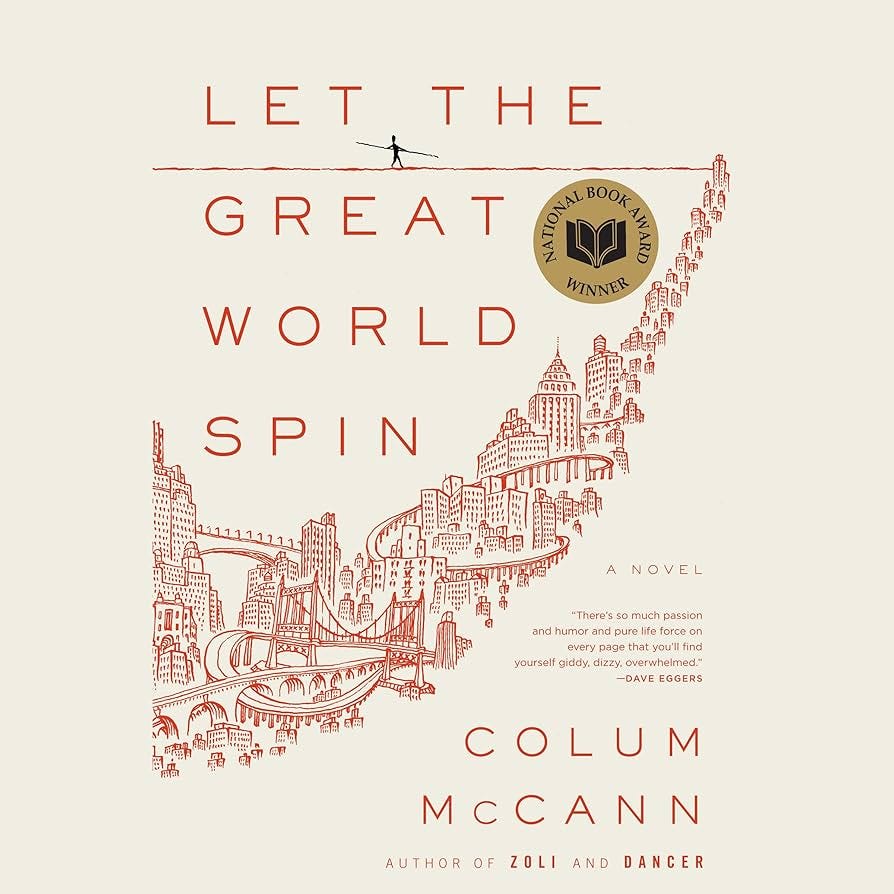https://longd.substack.com/p/polyvocal-1
1. The Bundrens
Like many of you, I’m guessing, As I Lay Dying (1930)1 was where I became a Faulkner devotee. I’d put off reading him a long time. Too “difficult” I’d heard, and so Southern—I was a Northern boy to the core. In addition, I started my adult writing life under the spell of poets like John Haines, Robert Bly, Gary Snyder, and others who left swaths of the page uninhabited. I’d yet to bond with prose writers who issued torrents of words, roiling eddies of syntax—writers of a lush, high style; I’d not yet encountered such marvels as the 300-word sentence that opens Faulkner’s short story, “Golden Land.”2
Anyway, I started into Faulkner in my early 30s. The discontinuity of The Sound and the Fury troubled me until I re-read it years later, but I flat-out loved As I Lay Dying from the git-go. Is it a tragedy? Well, hmm, things certainly don’t go well for Addie Bundren, the family matriarch, whose final wish is to be buried with “her people”—perhaps not an unfulfillable desire most days, but—too bad for her—there are two impediments: a) her husband Anse is a world-class cheapskate, and b) “her people” are on the far side of a flood-stage river. So, yes, there’s pathos. And there’s pathos—from a modern reader’s perspective—in the poverty and “backwardness” or “stubborn ignorance” among some of the cast. Pathos, too, in the secret pregnancy of 17-year-old Dewey Dell, the family’s only daughter. But, I’m sorry, it’s also hilarious, especially if you like slapstick/dirt-black humor—starting with Addie having to listen to her sons building her coffin outside her window.
Faulkner didn’t invent this scheme, but if you ask a hundred writers about multiple narration, ninety-eight will start with As I Lay Dying. It was a ballsy novel, prime Faulkner story material done with a modernist thumbing of the nose at the old way of doing things.3 I have no good idea about what Gen-Whatevers think about this novel, but from my 76-year-old POV, it’s still a vital/challenging read.
2. Raw vs. Cooked
Last time, we stopped at the boundary between novels with two POVs and novels that share the mic around more widely/generously.
If I’d been less nervous about the girth of that post, I’d have told you about Leaving Cheyenne (1963), Larry McMurtry’s second novel, which tells the story of a life-long love triangle. Each of the characters—Gideon, Johnny, Molly—gets to tell a third of the story, one at a time, chronologically.
We could’ve gotten the story differently—via a semi-omniscient narrative voice, say, everything coming from a single intelligence that decides which parts of which lives to include/exclude/play up/play down, and so forth. The sound of the voice would be more authoritative, the voice of a project supervisor wanting everything to cohere, snipping out the peripheral bits, making sure the pattern of cause and effect is palpable. In other words, the story would’ve been cooked.
McMurtry chose, instead, to let each of the three lovers speak independently—that is, we get them raw. I find this raw vs. cooked paradigm a really useful tool in understanding fiction. Both approaches work, both have power. Cooked favors thoughtful assessment, clarity, unity. Raw favors passion-in-the-moment, story matter that doesn’t completely mesh, eccentricity of voice and outlook.
3. Brief digression on Three-ness
In Polyvocal [1], we looked at X/Y, Yes/No stories, and noted that they often lean toward a third thing. The third thing represents outcome/resolution, victory/defeat, etc. It can also represent a new start/new path/transformation. In other words, three is Janus-like, looking backward, looking forward. And: three is where many starts.
Years ago, I read Syd Field’s handbook, Screenplay,4 and had Beginning/Middle/End drilled into me. I came to understand—in a gut-level way—how this paradigm was at the heart of all storytelling, how it exemplified our basic experience of the world: things are born, things mature, things die.
I also saw that the experience of reading a book or watching a film follows the same pattern:
Beginnings: Curiosity/wariness/lack of understanding/etc. . . .
Middles: Increasing comprehension/emotional bonding/increased expectation/etc.
Ends: Fulfillment/release of tension/letting go/thoughts settling into the mind/even sadness-tinged-with-anger because we have to leave.
And here’s the thing: This is independent of the story—that is, the events happening within the story, whether they’re laid out chronologically or in any other sequence.5
Finally, teaching, I realized—one of those light bulb moments—that in good writing the B/M/E structure is embedded not only in the whole artifact but in all its parts. The thing in its entirety, the chapters or big chunks between white spaces, the paragraphs, even the sentences. At every scale, B/M/E, things unfolding in sequence, drama. Good writers get this. Go find a terrific sentence and look at its design, the dance of inviting/withholding/unfolding.]
4. Today’s post
Today we’re looking at polyvocal novels: a) told by more than two or three speakers, b) ones with third-person narration that changes focus with each chapter, or c) novels consisting of islands of story matter without bridges to the mainland.
We can start with the easiest to parse: those with a built-in logic or design, which let us move from one section/chunk/chapter to the next with no disorientation—we don’t know what the characters will say, but we get the context, we know why we’re hearing from them.
Here’s a handful (non-chronologically):
The Women of Brewster Place, Gloria Naylor (1982)6:
The subtitle: A Novel in Seven Stories. Unlike Go Down, Moses (mentioned later) this is clearly a group portrait, not an assemblage of loosely-related short stories.
A Gathering of Old Men, Ernest J. Gaines (1983):
During Jim Crow: one by one, seventeen old Black men, each bearing a shotgun and a single spent shell, confess to a murder to protect the killer.
Daisy Jones & The Six, Taylor Jenkins Reid (2019)7:
The members of a meteoric 1970s rock band take turns narrating the story at a distance of some years (in the TV series they talk to an off-screen interviewer).
The Sweet Hereafter, Russell Banks (1991):
A horrendous school bus accident—many children killed. Narrated by survivors, family members, the driver, and others.
This novel’s model is the relay race. Members of a family pass off the story to the next as the novel moves through several generations.
Accordion Crimes, E. Annie Proulx (1996)10:
Same here, but this novel follows an instrument as it passes through a long history, owner to owner, Old World to New.
North Woods, Daniel Mason (2023):
One of my best reads of the year. The thing passed through time is a piece of ground with a house,11 starting with two young lovers who flee the Plymouth Colony, and continuing to the present day, enhanced by some narrative legerdemain I won’t disclose here.
5. Where the interconnection is less overt
Colum McCann’s novel, Let the Great World Spin (2009)12 is a great example. Unless you’ve read up on it beforehand, it might strike you as one of those cryptic, jumping-around kind of novels. But it’s not, for two main reasons:
The writing is engrossing—even if you don’t know how, or if, the vignettes connect, you’re captivated by the page before you, not worrying about the bigger picture . . .
Even before you see how it works, you feel the presence of a design—characters overlap, there’s unity of time and place . . . but, mostly, it’s a question of trust—you’re happy to hang with McCann until the structure becomes clearer.
[Another digression: Years ago, when my older son was a newish reader of sci-fi, he started into a William Gibson novel [Neuromancer or Mona Lisa Overdrive]. In each of the opening half-dozen or more chapters, Gibson tossed a new ball in the air. My son grew irritated, decided not to hang around to see what they had to do with each other.
Maybe there’s a math formula: N + 1 = RWA, where N = number of free-floating/unexplained story chunks at the start of a novel you can tolerate, and RWA = Reader Walks Away.]
In fact, Let the Great World Spin’s design is quite lovely. It draws a circle around an event—a character (modeled on real-life Philippe Petite) tight-rope-walking between the two towers of the World Trade Center—then selects a group of characters within the circle and tells their individual stories. Wiki gives a good description of this scheme:
The novel is written in a non-linear fashion, narrated by several of the eleven different protagonists. The lives of the characters are slowly woven together and revealed to be connected, despite the fact that some are not aware of this and have never even met. As most of the story unfolds over the course of several days, many events, such as the car crash and the trial, are retold from different perspectives by different narrators.
In Polyvocal [1], under Novels-in-Stories, I listed Jennifer Egan’s, A Visit from the Goon Squad (2010). The scheme in that one both resembles and differs from Let the Great World Spin. They each have a loosely connected circle of players; in each chapter/section we shift to a new character/incident/perspective. That said, McCann’s novel, no matter how far it goes off to the side, remains tethered to a single event, and despite the shifts, reads like a novel. The characters in Egan’s book know one another via their ties to a certain niche in the music business13, but there’s no one event at the middle of their orbit—their inter-relatedness is more free-floating. Also, the pieces in Goon Squad read like self-contained short stories [like those in Denis Johnson’s Jesus’ Son (1992)].
6. Polyvocals plucked from Goodreads
Goodreads has multiple lists of multiple-narration novels (one with over four thousand titles). Many are genre books—romance, YA, fantasy/horror, beach reads, straight thrillers, and so on. Many I’ve never heard of. But sprinkled throughout are some terrific literary novels.
A short sample (ones I haven’t already listed):
Cloud Cuckoo Land, Anthony Doerr (2021)14
There There, Tommy Orange (2018)
Sing, Unburied, Sing, Jesmyn Ward (2017)
Homegoing, Yaa Gyasi (2016)
The Underground Railroad, Colson Whitehead (2016)
All the Light We Cannot See, Anthony Doerr (2014)
Station Eleven, Emily St. John Mandel (2014)
Big Little Lies, Liane Moriarty (2014)
The Night Circus, Erin Morgenstern (2011)
People of the Book, Geraldine Brooks (2008)
The Vanishing Act of Esme Lennox, Maggie O'Farrell (2006)
The Poisonwood Bible, Barbara Kingsolver (1998)
7. Islands
Last time, I listed some “novels-in-stories,” and noted that the format no longer strikes us as odd/revolutionary/etc. Which circles us back to Faulkner: When Go Down, Moses (1942) was first published, the title read Go Down, Moses and Other Stories. For later editions, Faulkner insisted on labeling it a novel. It has seven “interconnected” stories (some had already appeared in magazines—including “The Bear,” perhaps his best-known short story, after “A Rose for Emily”). The only thing, really, that “interconnects” these pieces is that they take place in Faulkner’s famous, Yoknapatawpha County. They share neither the group drama of A Gathering of Old Men, or the group portraiture of The Women of Brewster Place.
But what of novels that aren’t collections of place-linked short stories, that are, essentially, just islands of story material?
A few weeks back, I expressed my frustration with seemingly complex/puzzle-like novels that, in the end, don’t cohere, don’t let us in on why the disparate array of story items have been assembled and laid before us. My whipping boy in that case was Thomas Pynchon’s 1100-pager, Against the Day (2006). I felt cheated, duped. The point I’m edging up to is this: Not all literary experiments work, but some, even when they don’t really come off, we admire, even cheer for—on account of their audacity, or because they’re fun, or because it quickens our own gray matter to spend time in the company of a brilliant mind.15 Yet others piss us off, seem like self-indulgent claptrap. Maybe it’s just a case of à chacun ses goûts.
Being bewildered isn’t always a downer. I’m frequently bewildered by Murakami novels. The novels of Samuel Beckett’s Trilogy [Molloy (1951), Malone Dies (1951) and The Unamable (1953)] are deeply bewildering. As are, more recently, Ishiguro’s, The Unconsoled (1995), and Steve Erickson’s, Shadowbahn (2017). I read both avidly. (The latter starts with a long-haul trucker encountering the World Trade Center’s twin towers [years post-9/11] in a barren stretch of South Dakota . . . oh, and Elvis’s still-born twin also makes an appearance.)
None of these are polyvocal; I bring them up because:
they’re strange, hard to get your pincers on . . .
they speak to the issue of what happens to the reading experience when you don’t really track what a writer is up to in a particular work . . .
I thought they’d be a good segue to David Mitchell’s novels.
Of which, I’ve read three:
The Bone Clocks (2014)
Black Swan Green (2006)
Cloud Atlas (2004)
Working on this post, I thought I’d talk about Mitchell’s strangeness, his games-manship, his love of the arcane. He’d be the iconic example of a writer whose novels consist of pieces—not short stories sharing a common slice of locale, as in Go Down, Moses, or members of a community as in Love Medicine and The Women of Brewster Place. But now that I’m here, I realize I have nothing cogent to say about them . . . because they haven’t stuck with me.16
What to do?
I’ll turn the ending of today’s post over to you. If you’re a seasoned reader of David Mitchell’s novels, if you think he’s a genius, or a trickster, or a philosopher-writing-as-a-novelist, or have other useful thoughts about him or his books, tell the rest of us, OK?
I thank you in advance.
In the meantime, goodchrist, it’s Election Day in America.
A few links:
https://gristjournal.com/2017/10/the-shattered-novel-rules-of-fragmented-fiction-by-samantha-edmonds/
https://www.penguinrandomhouse.com/the-read-down/unique-books/
https://modernmrsdarcy.com/14-books-with-thought-provoking-structures-and-going-back-to-book-school/
https://lithub.com/a-million-voices-in-the-praise-of-the-polyvocal-novel/
https://www.reddit.com/r/books/comments/8sihgy/novels_made_up_of_distinct_novellasized_sections/?rdt=58146
https://lithub.com/many-voices-many-truths-on-the-benefits-of-polyvocal-stories/
And the Birth Year Project: is still open for business . . .
You supply your birth year, I respond with a short list of books published that year—the popular/well-known titles first, then some books I'd recommend. If your year's already been done, I'll do an update. So far, we’ve done 19 years altogether, between 1944 and 1989.
[See BYP Index in navigation bar. Note: Due to a problem I’ve yet to solve, the list atop the Index is incomplete—several of the newest years aren’t included.]
Extra credit: You read one of the books (ideally one you're unfamiliar with), then tell me what you thought. If we get enough of these, I'll aggregate and post.
As I Lay Dying: From Wiki:
Faulkner said that he wrote the novel from midnight to 4:00 a.m. over the course of six weeks and that he did not change a word of it. Faulkner spent the first eight hours of his twelve-hour shift at the University of Mississippi Power House shoveling coal or directing other works and the remaining four hours handwriting his manuscript on unlined onionskin paper.
"Golden Land”: Faulkner spent time toiling in the film industry; this is a Hollywood story, far removed from his mythic Yoknapatawpha County, Mississippi.
[Anyone wanting a tutorial on how to construct a long sentence could copy out Faulkner’s, then reproduce its structure using your own words.]
Another quick observation: At some point, I saw that my love of the word-stingy/understated/pared-back kind of prose and my love of the eccentrically verbose, neologism-rich, caution-to-the-winds kind were only superficially out of sync. They both were legit iterations of voice, both examples of excellence . . . and I discovered that, once in a while, both could co-exist within a single writer. Which helps explain my deep attachment to Cormac McCarthy’s 1979 novel, Suttree, and its effect of my own prose.
The old way of doing things: Ways of writing have labels slapped on them; writers are said to be part of movements, but the terms are often imprecise, baggy. “Modernism” corrals a diverse bunch of writers working in the first half of the 20th century, but only some of that period’s writers were modernist, and those who were often had little in common except not writing like Henry James or John Galsworthy or William Dean Howells, et al. Hemingway and Faulkner were equally modernist but the feel of their prose could hardly be more divergent. [It’s also useful to remember that the bestseller lists were packed with titles that were anything but modernist.]
Screenplay: First published in the early 1980s, revised and re-issued several times since. Field says all American films use a three-act structure—Act One takes up the first quarter of the film, Act Two is a half, Act Three the final quarter. Act Two is triggered by a major plot point/change of meaning or direction. Ditto for Act Three.
And here’s the thing: Want an extreme example? OK, here’s two: Time’s Arrow, Martin Amis (1991) and Harold Pinter’s, Betrayal (1978, the play; 1983, the film). Both are told in reverse order.
I don’t have room here to explain why Amis’s novel is such a weird gut punch, but the reversal isn’t a “gimmick”—it’s a direct product of the theme (the ethics in this world are “upside down”—the way they are in Orwell’s, 1984) . . . I found it an imaginative tour de force.
Betrayal is about a love triangle. The first thing you see is the lovers parting the final time—a moment steeped in aftermath. Whereas the last thing you see is the moment when the lovers first lock eyes—they don’t know all that lies ahead, but, oh boy, we do. I get shivers just writing about it. Anyway, the B/M/E of our reading experience, our response to the work, operates as it always does . . . even with the story events are told in reverse order.
Gloria Naylor: Winner of the 1983 Nation Book Award.
Daisy Jones: I’d read the novel and was jazzed to see the TV adaptation. I can no longer remember the differences between the versions, but the show had Riley Keough (granddaughter of Elvis) and she’s a deliciously loose cannon. [The identity of the off-screen interviewer, revealed toward the end, is a major plot point.]
Updike: I couldn’t recall the fine points of this one . . . here’s Amazon’s blurb":
In the Beauty of the Lilies begins in 1910 and traces God’s relation to four generations of American seekers, beginning with Clarence Wilmot, a clergyman in Paterson, New Jersey. He loses his faith but finds solace at the movies, respite from “the bleak facts of life, his life, gutted by God’s withdrawal.” His son, Teddy, becomes a mailman who retreats from American exceptionalism, religious and otherwise, into a life of studied ordinariness. Teddy has a daughter, Esther, who becomes a movie star, an object of worship, an All-American goddess. Her neglected son, Clark, is possessed of a native Christian fervor that brings the story full circle: in the late 1980s he joins a Colorado sect called the Temple, a handful of “God’s elect” hastening the day of reckoning. In following the Wilmots’ collective search for transcendence, John Updike pulls one wandering thread from the tapestry of the American Century and writes perhaps the greatest of his later novels.
Relay race: Remember Richard Linklater’s film, Slackers (1990)? It’s been ages since I‘ve seen it, but doesn’t it also work this way: We hang with one bunch of characters awhile, they meet another bunch of characters, then the camera follows them, and so forth.
https://en.wikipedia.org/wiki/Slacker_(film)
Accordion Crimes: I once used a paragraph from this in an essay about physicality/objects in fiction writing, especially the exact names of things that insiders use:
He had cut the grille with a jeweler’s saw from a sheet of brass, worked a design of peacocks and olive leaves. The hasps and escutcheons that fastened the bellows frames to the case ends, the brass screws, the zinc reed plate, the delicate axle, the reeds themselves of steel, and the aged Circassian walnut for the case, he had purchased all of these. But he had constructed and fashioned the rest: the V-shaped wire springs with their curled eyes that lay under the keys and returned them to position in the wake of stamping fingers, the buttons, the palette rods. The trenched bellows, the leather valves and gaskets, the skived kidskin gussets . . .
Skived kidskin gussets!!
Ground with house: Richard McGuire uses a similar scheme in his graphic novel, Here (2014), but his format allows multiple time planes to appear simultaneously, via insets. A big-screen adaptation is premiering this week.
Let the Great World Spin: You should read this one. (Though I bet most of you reading this note already have.)
Music business: A few weeks ago, I read another rock n’ roll novel, Liz Riggs’, Lo-Fi (2024)—youngish woman working the door at a venue, very insidery, and at several spots throughout, she pauses to give us a playlist, a soundtrack of the time and place.
[Note: for my own amusement, I assembled a couple of these at Spotify. If you’re so inclined, you could have a listen: Playlist of Songs from Liz Riggs Novel Lo-Fi and Liz Riggs Lo-Fi Playlist #2 at Spotify (free download version), David Long.]
Cloud Cuckoo Land: Much as I admired his earlier novel, All the Light We Cannot See, I was pretty much blown away by this one. An amazing work of imagination. It’s one of those books where a writer’s personal genius finds the right amalgam of storytelling elements—history, story-within-story, magical realism, characters we connect with . . . and, in its way, it’s a thriller. [FWIW: This novel has 233,367 ratings at Goodreads.]
Brilliant minds: Last year’s post, Reading Projects [3] Big Hard Novels, was rife with these. Some, for instance, Miss Macintosh, My Darling, Marguerite Young (1965) I know I’ll never get to, but I’m glad they were written.
https://longd.substack.com/p/reading-projects-3-big-hard-novels
Mitchell: Why one book sticks and another doesn’t is an interesting question. I want to give it more thought . . . because it’s not enough to say the good ones remain while lesser ones wisp away. That’s too facile, and not, I think, accurate. Why do readers, roughly equal in terms of smarts/reading savvy/affection for literature, have such different reactions to novels? Why are only a few of my top fifty novels on your top fifty novels list? It’s because of personal strangeness. The personal strangeness you hear in the voice of a book somehow meshes with/hooks onto your own personal strangeness—there’s an affinity or sense of kinship operating so far inside it almost defies explanation.









Love your explanation of cooked vs raw; that vividly describes the difference between in-own-voice narratives and the more carefully managed narrative when filtered through the consciousness of some narrative entity.
Also, I made myself a post-it note with your comment about great sentences having, just like a book, a beginning/middle/end--look for the dance of inviting/withholding/unfolding. (And then later today I wrote a sentence unconsciously (insidiously?) inspired by that vision of dancing.) Thanks, David!
I am just now starting Let the Great World Spin. I put it on my TBR list because of a recommendation in one of your earlier posts.